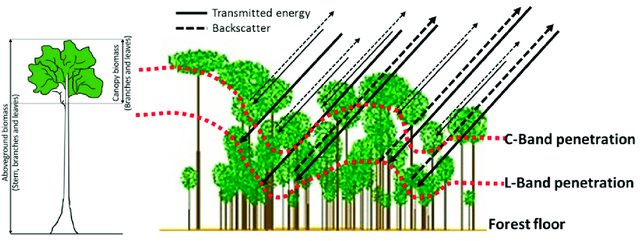The ability to identify structures below the canopy is mostly limited (or enabled) by the wavelength and not necessarily a matter of application. L-band is partially able to penetrate volumes but I am not sure if signals would reach the ground. P-band would be more effective here, but the BIOMASS mission is launched in 2021 the earliest.
As shown here, L-band potentially goes deeper into the vegetation but it doesn’t reach the earth’s surface.

source: https://www.researchgate.net/publication/318100548_Synergetic_of_PALSAR-2_and_Sentinel-1A_SAR_Polarimetry_for_Retrieving_Aboveground_Biomass_in_Dipterocarp_Forest_of_Malaysia
Yet, if you have fully polarimetric data you can apply a Pauli decomposition to highlight the different scattering mechanisms of a pixel. If there is something below the canopy it might give a different mixture in the RGB composition. An example is given here: ALOS-2 polarimetry